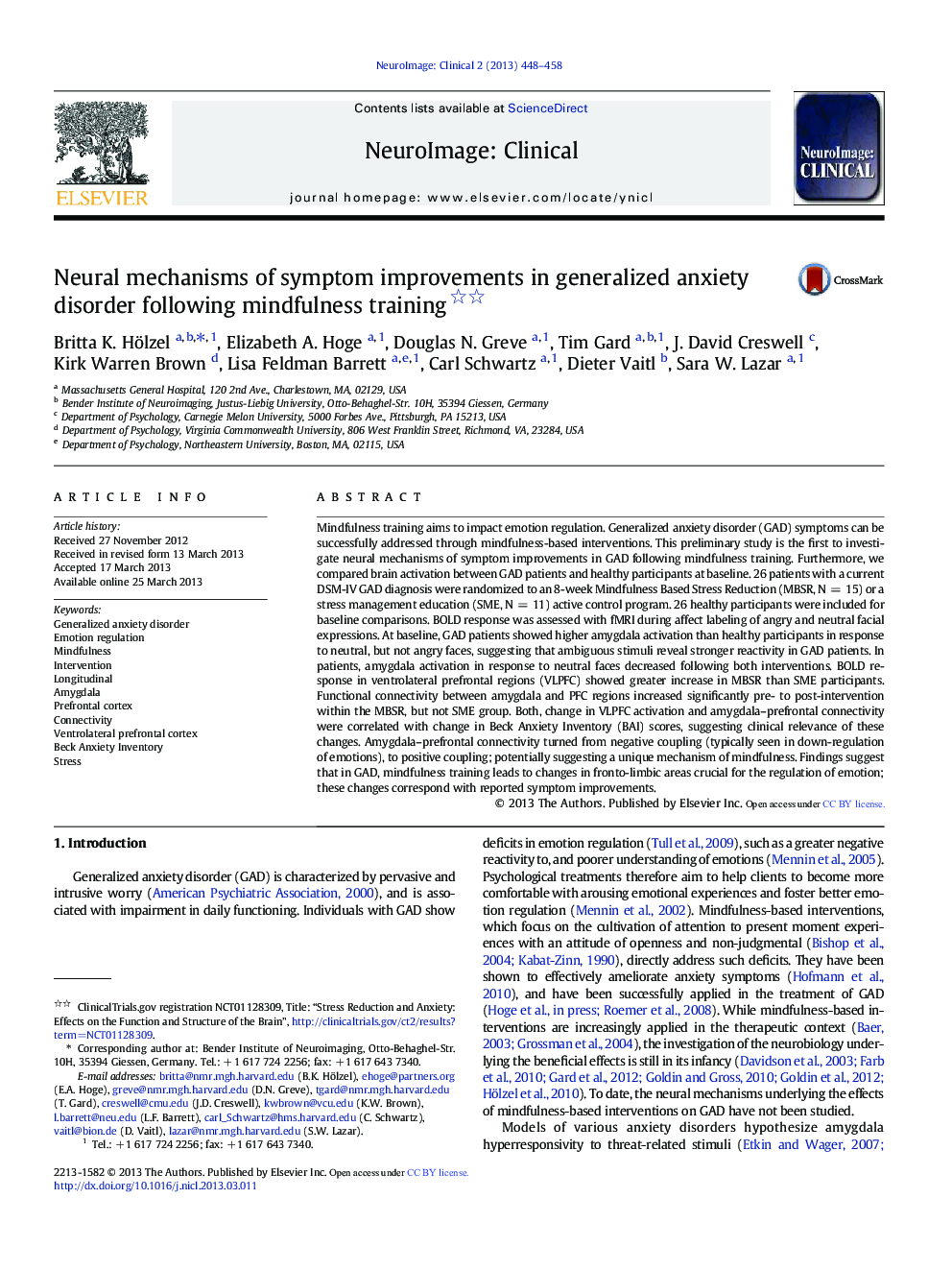| کد مقاله | کد نشریه | سال انتشار | مقاله انگلیسی | نسخه تمام متن |
|---|---|---|---|---|
| 3075528 | 1580965 | 2013 | 11 صفحه PDF | دانلود رایگان |

• GAD patients show higher amygdala activation to neutral faces than healthy subjects.
• In GAD patients, amygdala activation decreased after stress reduction interventions.
• Ventrolateral PFC activation during affect labeling increases following mindfulness.
• Amygdala–PFC functional connectivity increases following mindfulness.
• These changes following mindfulness correlate with improvements in anxiety symptoms.
Mindfulness training aims to impact emotion regulation. Generalized anxiety disorder (GAD) symptoms can be successfully addressed through mindfulness-based interventions. This preliminary study is the first to investigate neural mechanisms of symptom improvements in GAD following mindfulness training. Furthermore, we compared brain activation between GAD patients and healthy participants at baseline. 26 patients with a current DSM-IV GAD diagnosis were randomized to an 8-week Mindfulness Based Stress Reduction (MBSR, N = 15) or a stress management education (SME, N = 11) active control program. 26 healthy participants were included for baseline comparisons. BOLD response was assessed with fMRI during affect labeling of angry and neutral facial expressions. At baseline, GAD patients showed higher amygdala activation than healthy participants in response to neutral, but not angry faces, suggesting that ambiguous stimuli reveal stronger reactivity in GAD patients. In patients, amygdala activation in response to neutral faces decreased following both interventions. BOLD response in ventrolateral prefrontal regions (VLPFC) showed greater increase in MBSR than SME participants. Functional connectivity between amygdala and PFC regions increased significantly pre- to post-intervention within the MBSR, but not SME group. Both, change in VLPFC activation and amygdala–prefrontal connectivity were correlated with change in Beck Anxiety Inventory (BAI) scores, suggesting clinical relevance of these changes. Amygdala–prefrontal connectivity turned from negative coupling (typically seen in down-regulation of emotions), to positive coupling; potentially suggesting a unique mechanism of mindfulness. Findings suggest that in GAD, mindfulness training leads to changes in fronto-limbic areas crucial for the regulation of emotion; these changes correspond with reported symptom improvements.
Journal: NeuroImage: Clinical - Volume 2, 2013, Pages 448–458